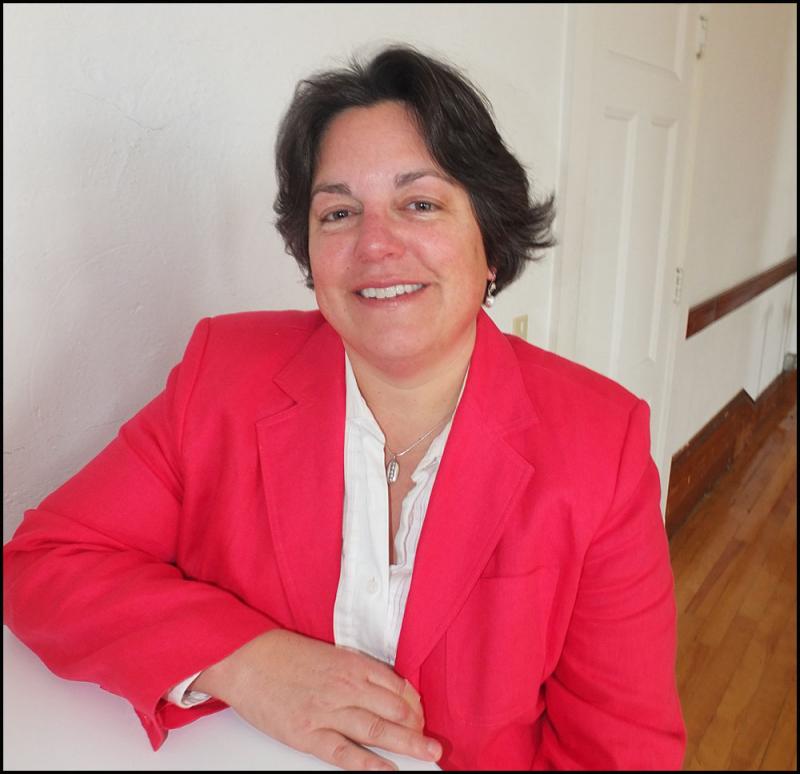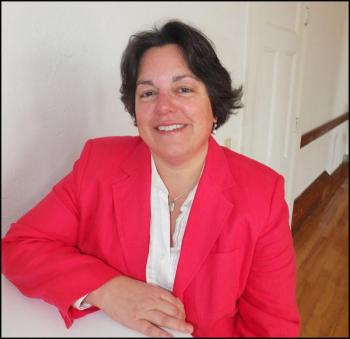Insurance company denies $1.5 million school district claim to help with Rockport overcharge; Superintendent disputes town’s allegations
CAMDEN — Maria Libby, Superintendent of School Administrative District (Camden-Rockport K-8), hopes to sit with Camden and Rockport town managers and talk about resolving the fiscal mistakes that resulted in over-charging Rockport taxpayers by approximately $1.5 million and under-charging Camden. The town of Camden is also, “ready to meet whenever the District and Rockport are,” said Camden Town Manager Audra Caler.
At this point, any hopes that Liberty Mutual, the insurance company for SAD 28 will cover the cost of the mistake has been dashed; as of this week, Libby received notice that the district’s claim was denied.
The denial rested on a list of reasons involving general liability coverage, as well as school leaders errors and omissions, and “specially, a school district is permitted under Maine law to obtain revenues only from lawful taxing measures and legislative appropriations and is not permitted to obtain revenue from insurance proceeds,” said Libby, reading from the denial letter.
The district has yet to hear from attorneys about whether there is room to appeal the denial, said Libby.
That means that the three entities — Camden, Rockport and the public school district that educates their K-8 children — must find resolution amongst themselves. Libby thinks it is possible, if there is collaboration.
But it is hard, she said, when Rockport cancels meeting with the parties and issues a statement, as it did on Sept. 22, that contains what she calls misrepresentations, especially about who knew what when about the errors.
“It seems like Rockport is really trying to lay blame and points finger very much targeted at me,” she said. “And I’m not sure why. But there is just inaccurate information.”
She said Sept. 28: “I would like to sit down with the parties and get to work to figure out a resolution. It is an incredibly complex issue.”
The situation, which has also resulted in a lawsuit filed by Rockport against Camden and SAD 28 in Knox County Superior Court, rests on the fact that Rockport was over-billed, perhaps going back to 2009-2010, because of an inaccurate cost-sharing calculation formula.
Rockport has requested a court stay on the matter, but filed the suit to meet deadlines that it would otherwise forfeit the right to take legal action.
Nonetheless, the matter has taken on legal inflections, as Rockport’s Select Board continues to meet behind closed doors with its attorney to discuss the issue.
This past week, an independent analysis of the numbers was completed by former Maine Dept. of Education acting commissioner Suzan Beaudoin. Her numbers match those of Libby and the district’s business manager, who concluded that SAD 28 over-billed Rockport by $1,484,381,31 (fiscal years 2010-2020).
That number could be $106,210 less, said Libby, depending on the interpretation of one year’s (2009-2010) formula language, as set forward by the state.
It’s a chunk of money that Rockport is due. But the three entities are protecting their interests, which are almost the same, whether that be the Camden taxpayer, the Rockport taxpayer, the students who attend the elementary and middle schools, or even the local economy, of which so many residents are employed by the schools.
What happened?
At issue is the cost-sharing formula that the SAD 28 business manager employs to send bills to both towns in order to pay for the education of the K-8 students. The school funding formula is complex, and has been adjusted several times by the State of Maine since 1964, when SAD 28 organized as a fiscal entity.
For decades, the cost-sharing formula depended on pupil count. And then before that, “way back when,” said Libby, everything was based on property valuation.
If Camden had more students, the cost assumed by Camden taxpayers was more; vice versa for Rockport. But the formula changed in 2009, when the state stipulated that any additional local amount needed to fund the schools, after the basic EPS formula was met (see sidebar), must be based on property valuation, not per pupil count.
That’s where the business office at SAD 28 made the mistake in 2010, perpetuating it for the next 10 years until July 2020.
During that period of time, there were five different superintendents and four different business managers; Libby became superintendent in 2015.
Over the last decade, SAD 28 continued to charge the two towns, and ultimately their taxpayers, according to per pupil count, when it should have added property valuation to two components of the formula — debt service and local allocation above the EPS.
Given that Rockport and Camden are low receiver towns, meaning that the state considers them wealthy enough to shoulder almost the entire cost of educating their children, and that this year’s budget is $17 million, the cost sharing formula becomes even more integral to funding public schools.
Last week, the Rockport Select Board issued its statement. Libby was on vacation, and on Monday, she sat down in an interview to discuss the assertions made by the five members of Rockport’s board.
Libby said the district became aware of its mistake July 15, when the new business manager prepared assessment documents for Camden and Rockport following the July 14 voter approval of the school budget. She said the task of preparing the assessments traditionally falls on the business manager.
There was a .97 cent discrepancy in, “his figures versus the outgoing business manager,” said Libby.
“He couldn't figure it out, so I said, ‘let’s work backward,’” said Libby. “Then we saw things that didn’t make sense.”
Libby said she called former business managers and superintendents, “trying to get to the bottom of what was happening.”
The business office and attorneys pored through old files, back to the original 1964 SAD 28 certification.
“It seems like we had been using per pupil count back to the early 2000s,” she said.
The district’s attorney, William Stockmeyer, of the Portland firm Drummond Woodsum, was consulted, and he subsequently retrieved the 2009 certificate of organization, which indicated the distinction between local additional money allocated based on property valuation.
According to Libby, when SAD 28 became Regional School Unit 28 in 2009 following Maine’s implementation of its massive school consolidation effort (Consolidation Law), the district received a new Certificate of Organization from the state.
Libby said she then called, “the Town of Camden, and I called Kerry [Leichtman, Rockport and Camden assessor], met with the town managers and created a spreadsheet back to 2011 for the correct amount.”
Because the towns wanted verification, the district hired Beaudoin, who finished the task last week.
“She said my numbers were correct,” said Libby.
However, at this point, Rockport is making its own calculations on how much the final bill is, and is applying interest charges.
The town has not said what the interest rate is that it is using, and both towns said Sept. 29 that they were waiting for final figures for 2009-2010 before releasing its own numbers.
Camden Town Manager Audra Caler said: “From what I understand, we're all still waiting on verification for 2009-2010 and 2010-2011, which I haven't received yet. Rockport may be calculating interest, which is their prerogative, but MSDA 28 and Camden are not. Camden is ready to meet whenever the District and Rockport are.”
Libby rebuts Rockport assertions
In the Sept. 22 Rockport Select Board statement, a line reads: “Although the superintendent has credited the school district’s new business manager and herself with finding the error this summer, the facts reveal that the superintendent was aware of concerns several years ago but disregarded them. In fact, the school district misrepresented to Rockport the requirements of State law and the proper factors to be applied to the assessment allocation to Rockport and Camden as demonstrated below:”
To that, Libby countered: “Anybody who knows me personally or knows my work as superintendent, I don’t disregard anything that comes to my desk. I certainly was not aware that we were incorrectly assessing the towns. I was aware they had questions, which I honestly thought we had given them accurate answers to. Because of my understanding, from my business managers, was the way we calculated the town allocations was based solely on pupil counts.”
She added: “When Rockport came with concerns that their valuation was going down and why wasn’t that reflected in the allocations, and we gave the answer, ‘because valuation isn’t part of the calculation’; therefore it is not going to have an impact on the allocations. It’s because that’s what our business managers believed and it was what I believed, based on what the business managers told me.”
Libby said: “We thought we were doing it correctly.”
She disputed other allegations in the Rockport statement.
“When they say we misrepresented to them, their ‘word choice’ seems to be making an assumption that we knowingly were giving them incorrect information, which is simply untrue. We now understand that we were giving them inaccurate information once we did all this research and went back and figured this out.
“We were incorrect for sure in what we were telling them but I don’t think it’s fair to say we disregarded anything or misrepresented anything.”
Libby also outlined her perspective on an exchange of emails cited by the Rockport Select Board:
In January 2017 correspondence, the Rockport /Camden town assessor questioned the school district’s business manager as to why spreadsheets were showing the cost of bonds for the new middle school as a 50/50 split between Rockport and Camden, placing a higher proportional cost on Rockport taxpayers despite its lower population, and asking whether anticipated changes in the towns’ valuations would impact their respective contributions. The school district’s business manager advised the assessor that for MSAD#28 “allocations between towns are based on sending students.”
- In January 2019, the towns’ assessor inquired of the now chair of the school board and school superintendent, when the two towns’ property valuation changes were going to be reflected in the school assessment allocation of the two towns. The assessor pointed out that Rockport’s valuation decreased in 2015 and Camden’s valuation increased in 2017. The school district did not respond.
To Libby, those statements are incorrect.
“I wasn’t aware of that conversation,” she said, of the January 2017 correspondence between the business manger and the assessor.
But, she said, “In response to that, she [the former business manager in 2017], responded to what she believed. That that allocations are based on sending students.... I didn’t even know that this conversation happened so I can’t explain what happened between them.”
Libby disputed Rockport’s description concerning the January 2019 inquiry by Rockport’s assessor.
On January 28, 2019, the town assessor contacted the business manager, not the superintendent nor board chairman, said Libby.
“Unbeknownst to me, he did ask [the former business manager],” she said. “He noted that in 2015, [Rockport] did a revaluation in which they lost value. They did a revaluation in Camden in 2017, which had the opposite effect.... The question is, ‘when will Rockport’s valuation decrease manifest itself in the school appropriations?’ A second question, ‘what is the magnitude of the change?’”
Libby said she was unaware of that email that was sent to the former business manager.
“I don’t know if J.C. responded or not,” said Libby. “That email was forward by Kerry [Rockport assessor] to Patrick [SAD 28 board chairman] in June of 2019 saying he would still like an answer. So one might assume that he didn’t get an answer but I don’t know that. Honestly, if J.C. had given him an answer, I know what the answer would have been: that valuation isn’t going to make a difference because we only base the formula on per-pupil count. Which is what we have said to them every time they have asked.”
She stressed that everyone at the district believed the allocation rested solely on per pupil count, not property valuation, and said that belief was inaccurate.
“So then in June, Kerry emailed Patrick, saying he still would like an answer to the question,” Libby said. “And in June, I answered Kerry with what is quoted in the final bullet [of the Rockport Select Board Sept. 22 statement: ‘Finally, in June 2019, after Rockport staff followed up, the school superintendent incorrectly stated in an email “[t]he answer is actually very simple, but will not offer much satisfaction. Rockport’s valuation is irrelevant in our school funding formula. We are a minimum receiver (Camden and Rockport) and the share of the budget for each town is based solely on student numbers.”In the view of the Rockport Select Board, this repeated error should never have been made.’].
“S, it wasn’t ‘finally in June,’” she said. “That’s the first time I knew Kerry had a question. Patrick forwarded it to me and asked me to answer the question. So, Kerry never got in touch with me in January or June. Patrick forwarded me the question the question that Kerry had asked Patrick and I responded to Kerry.”
She reiterated that the Sept. 22 statement contained unnecessary misrepresentations.
She said Rockport is in the driver’s seat of convening with Camden and SAD 28, “and we haven’t heard any from them.”
Instead, she said, “it seems to be playing out in the press with statements they are making that are inaccurate.”
The best way to resolve the complex situation is to collaborate, said Libby, “and avoid costly litigation” affecting taxpayers of the two towns paying for legal fees of three entities.
“The district absolutely takes responsibility for not using the correct formula to determine these allocations since 2009” she said. “I believe every former business manager and superintendent made an honest mistake in not recognizing there was an error. As soon as we discovered we were making a mistake, we have been incredibly transparent about it. I had no reason to verify that my business manager, who had been doing it for years prior to my arrival, had been doing it incorrectly.”
Libby wants a conversation.
“If somebody feels like they have a complete answer, that doesn’t sound like a collaborative process,” she said.
She refuted the following statement made by the Rockport Select Board: “The superintendent has recently stated that Rockport taxpayers have been overpaying their school obligation dating back to at least 2009. Although the school district has suggested that we should only fix the problem going forward, Rockport disagrees.”
Libby said: “That may have been one of the ideas tossed on the table. There are a lot of ways to think about this issue. But we haven’t suggested a solution or resolution. My interest is coming to the table, talking about the complexities of the issue, and figuring out what we can do to make this work for all the parties. I don’t believe anybody wants our school district to fold.”
She qualified that statement by saying, if: “someone expects us to take $1.4 million out of our budget.... If the district paid out of the money we got from taxpayers this year then $12.4 million — my guess is we’d have to lay off teachers.... I don’t think it is in anyone’s interest making out students suffer. It’s very difficult for the school district to fix the situation monetarily because the only way to get money is from the taxpayers who we are trying to pay back. I think it’s a very complex situation that requires people to sit around the table to talk.”
Openly, with the public?
“I feel like I would have an open meeting,” said Libby. “I don’t know if my school board would. I don’t know if my lawyers would recommend. I personally feel like this is a complex situation and I don’t have the answers. I feel the school district is responsible for causing this problem over the years.”
As of the end of September, there are no plans for the three entities to meet.
Reach Editorial Director Lynda Clancy at lyndaclancy@penbaypilot.com; 207-706-6657
Event Date
Address
United States




























